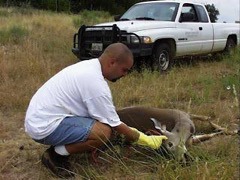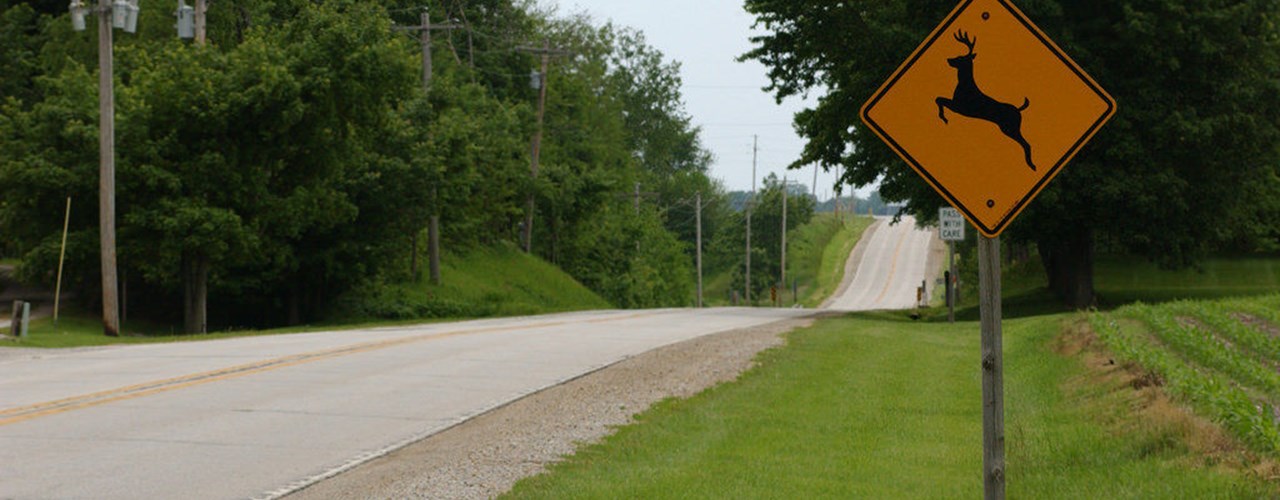I Hit a Deer With My Car: What should I do now?

If you are a Texas resident, you are likely aware of the prevalence of white-tailed deer (Odocoileus virginianus) and the threat they can pose to drivers in both rural and, increasingly, urban areas. According to the Texas Department of Transportation, wildlife in roadways caused 8,778 vehicle collisions in 2017. Many sources, such as this TPWD news release, can provide helpful tips on how to avoid deer collisions, such as braking firmly and resisting the urge to swerve your car. If you have no choice but to collide with a deer in the road, what steps do you need to take next? Below we address some of the most frequently asked questions following a deer collision:
Q: Who can I call to help with the situation?
Of course, if there is a human injury, it is best to dial 911 immediately for assistance. If no harm was done to any passengers in the car, but the deer is injured or killed, the next step is to call a Texas game warden (or the warden for the state in which the crash occurred). There are two pathways to locate a TPWD game warden if you need assistance:
- Call the county’s sheriff department, as they serve as the radio dispatch for Texas game wardens.
- Conduct an internet search to locate the local game warden and ask for assistance.
Q: What do I do if the deer is injured or dead?
Once you have located a game warden, they will take the responsibility of determining if the deer has potential for rehabilitation by an approved Texas wildlife rehabilitator. If the deer is killed or cannot be rehabilitated, it is up to the discretion of the game warden to decide the fate of the deer.
Q: Can I take the carcass home for consumption or keep the antlers of a buck?
No, it is unlawful to possess any part of a deer that has been hit by a motor vehicle.
Q: Should I file a crash report if there is damage to my car?
If you intend to make an insurance claim, you will need law enforcement officials to fill out and submit a crash report, which can be obtained from the local police department or the Texas Department of Transportation.
Above all else, pay attention to the road ahead and keep an eye out for wildlife. Vehicle crashes involving deer occur on a daily basis in the rural areas of Texas, and are a growing concern for suburban areas, where deer numbers are rapidly increasing within the city limits. Staying alert and informed on how to handle potential crashes are the best possible ways to ensure safety for both drivers and wildlife on roadways.
For more news like this, subscribe to our monthly newsletter Conservation Matters.
--
The Texas A&M Natural Resources Institute grants permission for authors, readers and third parties to reproduce and republish materials from its blogs, publications and online products through permission requests to NRI Communications at nri@tamu.edu. This includes the use of figures, maps, photography and video media. If you have questions about permissions, please contact Brittany Wegner.




